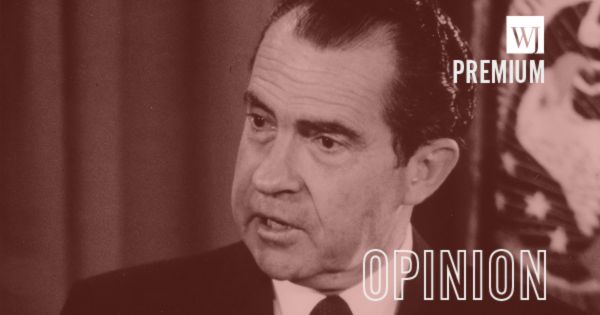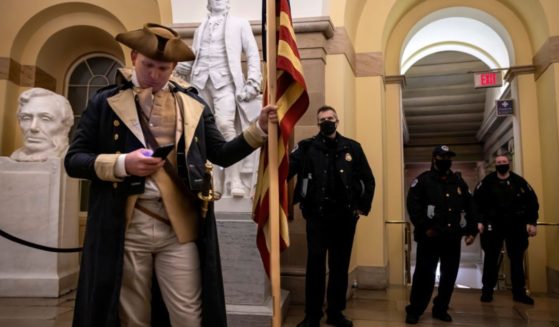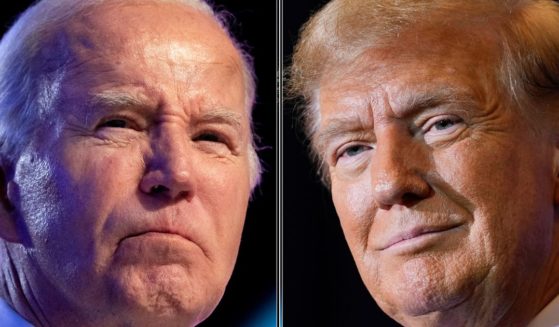
Endless Congressional Spending Has Been Plaguing Us for Decades: It All Started in 1971
The U.S. national debt has increased by $300,000 since I began writing this sentence. Every 30 seconds, another $1 million tacks onto a debt that now exceeds $33 trillion.
In other words, it takes the average American years — in most cases, many years — to earn what runaway government spending adds to the national debt in mere seconds.
These numbers defy comprehension.
While most Americans seem to understand that this level of spending has a direct bearing on their lives, they do not necessarily understand why or how it came to be this way.
In short, blame Richard Nixon.
On Thursday, an innocuous video shared on the X platform prompted a brief exchange between two social media influencers, one of whom traced the origins of our present situation to the third year of Nixon’s presidency — 1971.
Wall Street Silver, an account with more than 1 million followers, posted an 18-second clip of a young-ish woman holding a coffee and explaining to an interviewer that she and others in her age group have suffered financially.
“I think our generation completely got screwed,” she said.
“I don’t think our parents realize how difficult it is — I mean, everything right now, definitely post-pandemic, it’s just –it’s crazy. Like, I’m working 45 hours here, but I still have to ask my parents for help living here by myself,” the woman said.
Wall Street Silver wanted to know why.
“Are they correct? Is it tougher now? Or are they making bad decisions about their career choices? Both?” the account asked in the accompanying post.
“I think our generation got completely screwed. I don’t think our parents realize how difficult it is.”
“I’m working 45 hours here but I still have to ask my parents for help, living here by myself”
Are they correct? Is it tougher now? Or are they making bad decisions about… pic.twitter.com/jvaoAuFiRi
— Wall Street Silver (@WallStreetSilv) September 21, 2023
End Wokeness, an account with 1.6 million followers, responded with a different question: “Where did it all go wrong?”
Where did it all go wrong?
— End Wokeness (@EndWokeness) September 21, 2023
Wall Street Silver had an answer, and it was a good answer.
“When Nixon ended the gold standard for our currency in 1971. This enabled the Congress to spend and start having ridiculous deficits to fund wars and social spending. Many stats measuring quality of life became worse starting approximately in 1971,” the account replied.
This connection between runaway government spending and Nixon’s 1971 decision to take the U.S. off the gold standard is not a new one.
For instance, on Aug. 15, 2011, Charles Kadlec marked the 40th anniversary of Nixon’s fateful decision with a devastating opinion piece in Forbes titled “Nixon’s Colossal Monetary Error: The Verdict 40 Years Later.”
According to Kadlec, Nixon’s abandonment of the gold standard led to “the worst 40 years in American economic history.”
That history includes the Great Depression, so the eye-opening assertion required explanation.
In short, since 1971, the U.S. had seen “1% slower growth under the paper dollar system” compared with previous decades, Kadlec wrote.
This depressed growth rate had catastrophic consequences. At pre-1971 growth, the U.S. economy would have been $8 trillion larger by 2011. At that rate, family incomes would have nearly doubled their 2011 median.
And what is the relationship between diminished growth and deficit spending?
Pre-1971 growth rates also would have produced a 50 percent larger tax base. This would have led to a “bounty of tax revenues that would make the current and projected fiscal challenges manageable without severe spending cuts or growth killing tax increases on working Americans,” Kadlec wrote.
That kind of opportunity cost helps explain why, despite living in the richest country in the history of the world, many Americans — including the woman in the video — feel that things have gone wrong. They are worse off — substantially worse off — than they should be.
Perhaps the best way to think about the gold standard’s importance is to recall what it did, as well as how it made people think and behave.
Before 1971, the gold standard guaranteed that paper money had some backing. Something besides its mere existence gave it value.
This had the salutary effect of making people think and act as if scarcity existed. Value had meaning, in which case spending more money than you had on hand could produce devastating consequences.
In 1917, for instance, President Woodrow Wilson asked Congress for a declaration of war against Germany. He then asked that the cost of the war “be sustained by the present generation, by well conceived taxation.”
“It is our duty, I most respectfully urge, to protect our people so far as we may against the very serious hardships and evils which would be likely to arise out of the inflation which would be produced by vast loans,” Wilson said.
Likewise, in his 1989 farewell address, President Ronald Reagan spoke of something he wished had been different about his two-term presidency.
“I’ve been asked if I have any regrets. Well, I do. The deficit is one,” he said.
Reagan hailed from a different era. Elected officials no longer talk that way. They have no reason to do so. After all, our debt has grown to such proportions that no one need feel responsible for it.
Readers might raise one objection — that is, populists historically have appeared to argue against the gold standard.
For instance, most have heard of then-Democratic presidential nominee William Jennings Bryan’s powerful 1896 “Cross of Gold” speech.
“Having behind us the commercial interests and the laboring interests and all the toiling masses, we shall answer their demands for a gold standard by saying to them, you shall not press down upon the brow of labor this crown of thorns. You shall not crucify mankind upon a cross of gold,” Bryan thundered.
His words, however, should not mislead us. The Populists of the 1890s sought silver coinage, not fiat money. They knew that paper money needed backing, and they preferred bimetallism to gold alone.
Furthermore, they understood that government debt redistributes wealth upward. Indeed, debt crushes workers.
“We denounce the sale of bonds and the increase of the public interest-bearing debt … as unnecessary and without authority of law, and demand that no more bonds be issued, except by specific act of Congress,” the 1896 Populist Party platform read.
Thus, to review, the gold standard preserved the value of paper money. Nixon’s decision destroyed that value and led to diminished growth. The tax base shrank, and deficits surged.
Worse yet, public officials stopped thinking in terms of scarcity and fiscal responsibility. They borrowed, printed money, made endless war and enriched themselves.
One can hardly imagine a more shameful legacy.
It all began in 1971, and we have our national debt to prove it.
Truth and Accuracy
We are committed to truth and accuracy in all of our journalism. Read our editorial standards.












